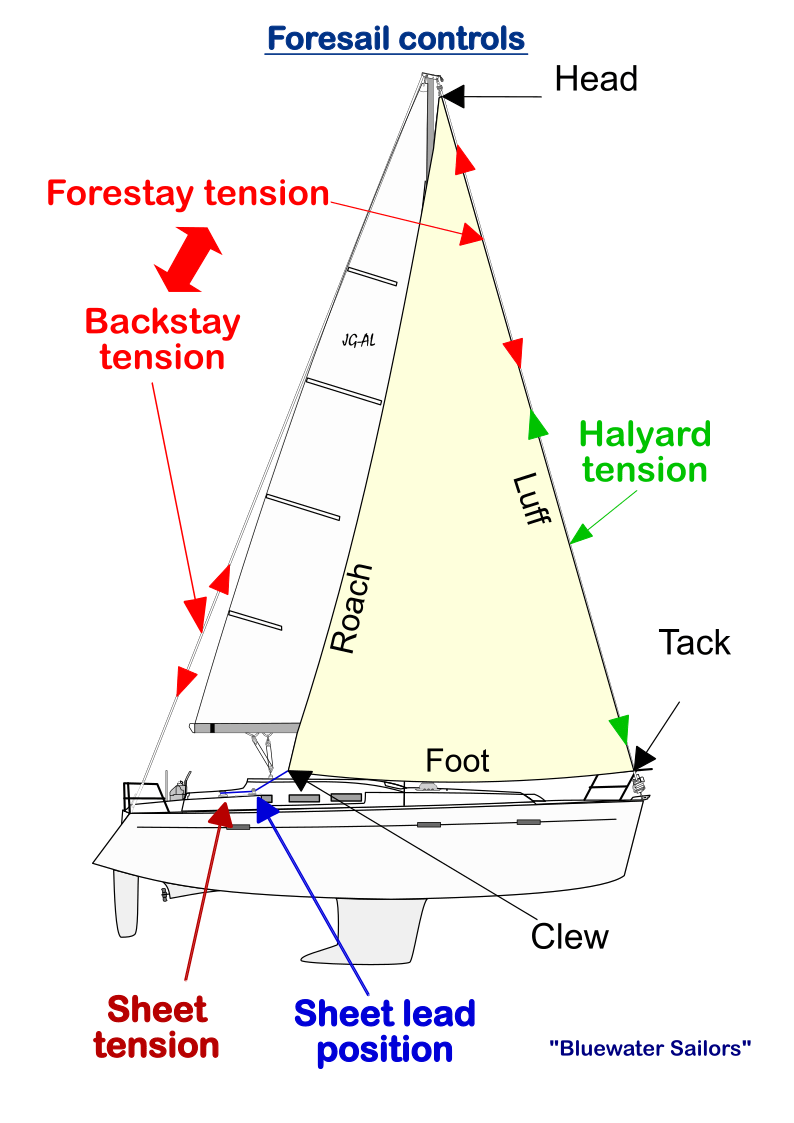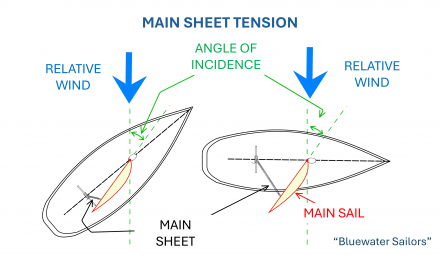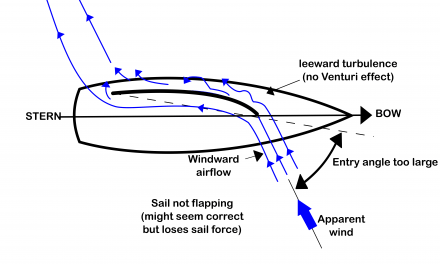Introduction.
In the previous chapters of this online book “Sail Handling and Trimming”, we saw the theoretical foundations of the sail, highlighting the importance of the angle of incidence and the sail draft to correctly trim a sail and produce maximum sail force.
In this fourth chapter, we will begin to apply these theoretical foundations, in a practical way, to a specific sail on our boat: the headsail (genoa or jib). In future chapters, later on, we will deal with other headsails such as the spinnaker or asymmetric sails.
To do so, we will see the four control elements that we have on this headsail, which we can see in the figure, and some notions of how to act on them in different wind conditions.
These control elements on which we can act on a headsail (genoa or jib) are:
– the tension of the forestay,
– the tension of the halyard with which we hoist the sail,
– the position of the sheet traveller,
– and the tension with which we take in the sheet.
-We will, however, leave for the next chapter how to use the sail indicators (the telltales), which will help us to act on these control elements for fine-tuning the trim.
Este contenido solo está disponible para subscriptores de navegantesoceanicos.com
Efecúe Log In para desbloquear.
Este contenido solo está disponible para subscriptores de navegantesoceanicos.com
Efecúe Log In para desbloquear.






